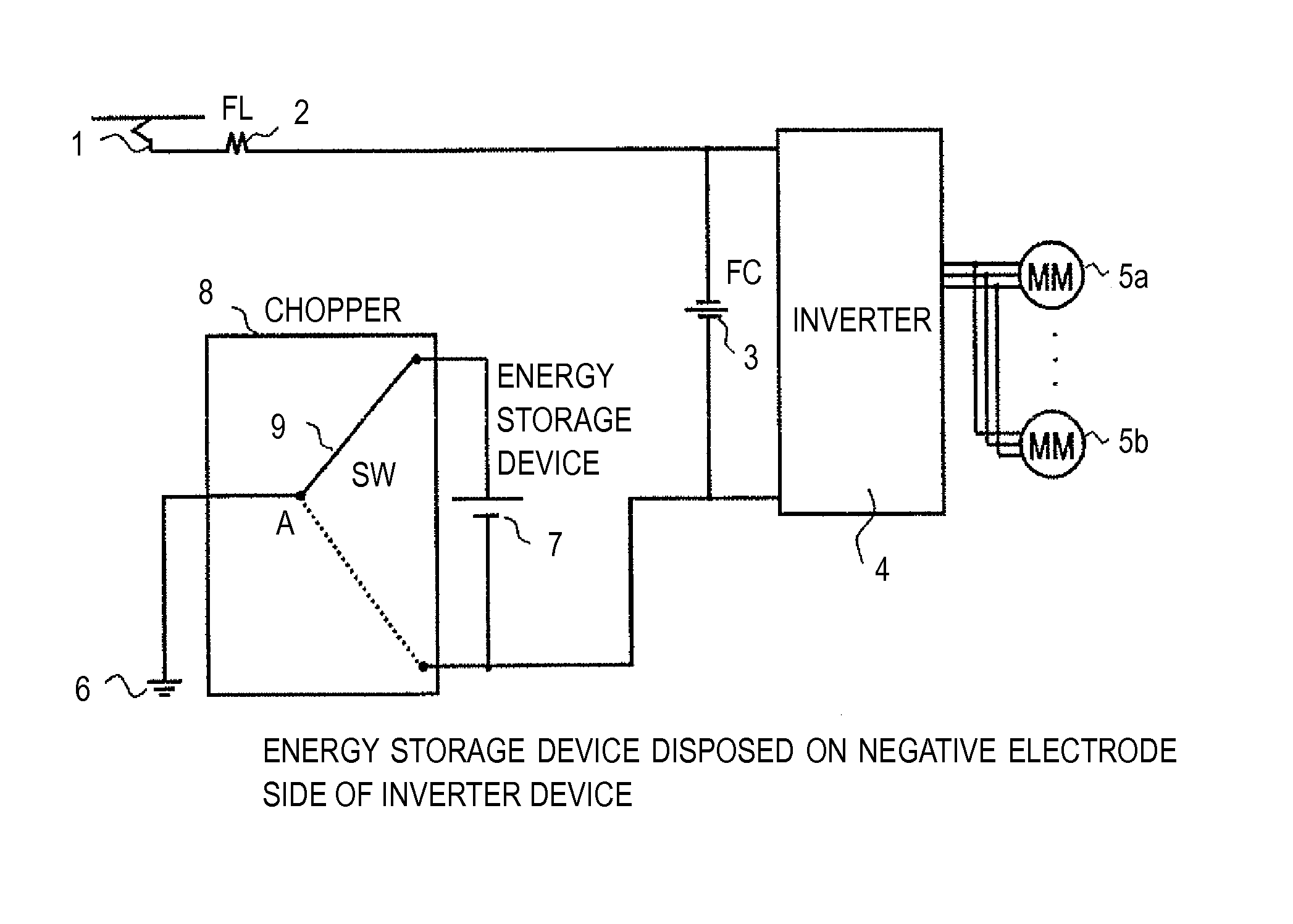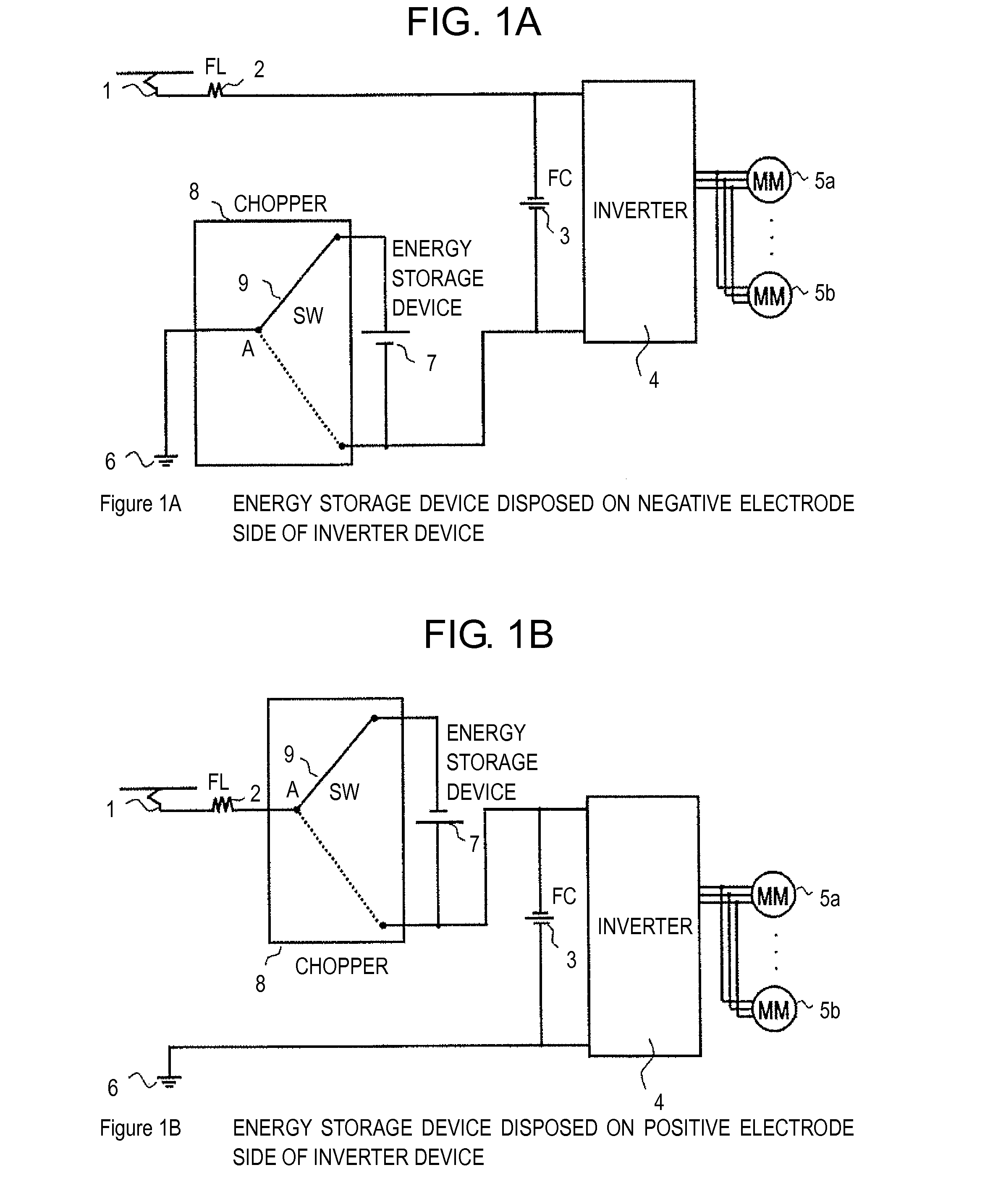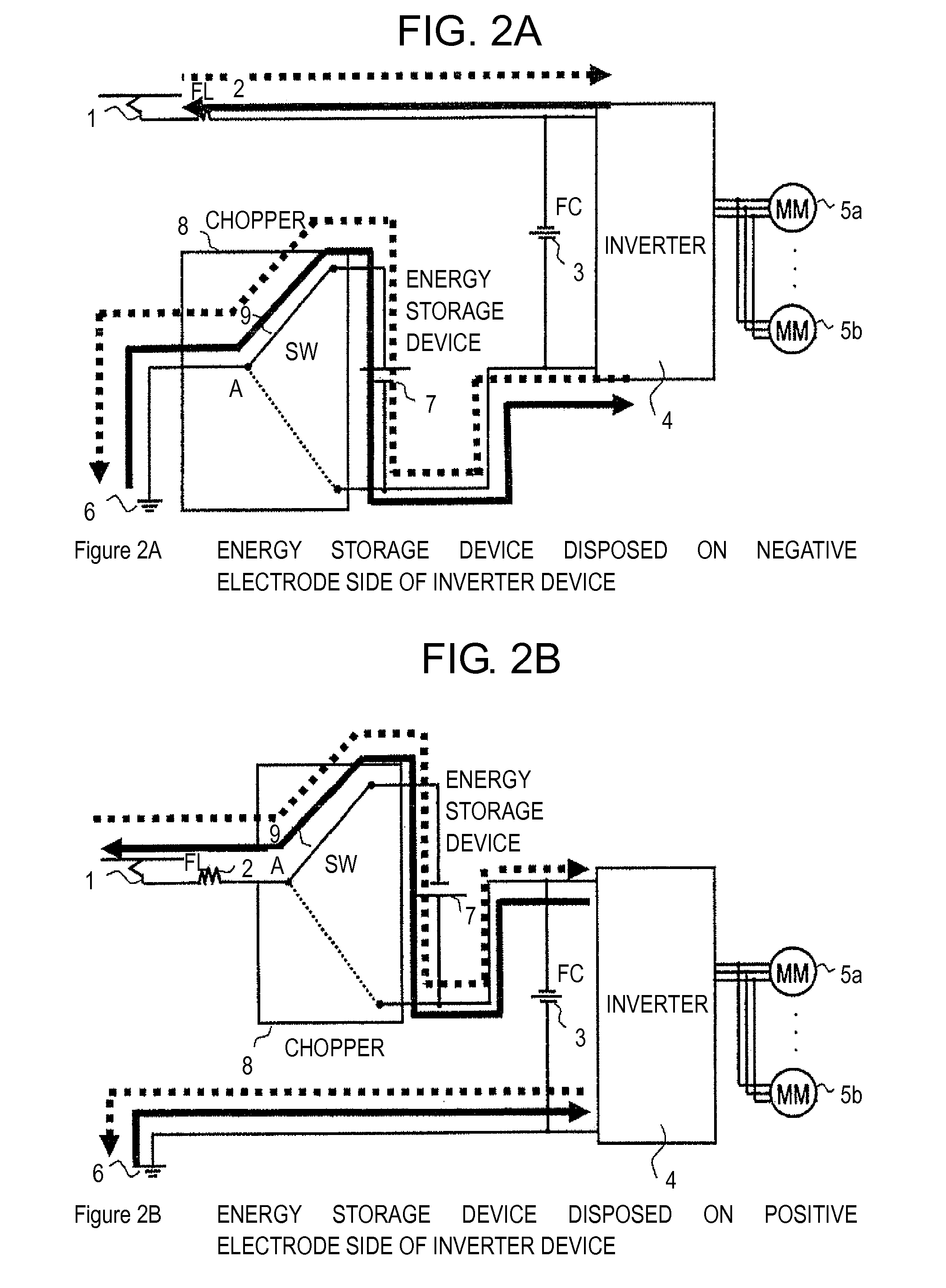Drive device for railway vehicle
a technology for driving devices and railway vehicles, which is applied in the direction of motor/generator/converter stoppers, dynamo-electric converter control, propulsion by batteries/cells, etc. it can solve the problems of insufficient braking force, so as to prevent overcharging or overcharging of energy storage devices, suppress the effect of abrupt change in voltage of dc portion, and improve flexibility in selecting energy storage devices
- Summary
- Abstract
- Description
- Claims
- Application Information
AI Technical Summary
Benefits of technology
Problems solved by technology
Method used
Image
Examples
embodiment 1
[Embodiment 1]
[0035]FIG. 1 shows a basic configuration of a first embodiment of a drive device for a railway vehicle, which is a subject of the present invention. FIG. 3 shows control sequences at the time of power running operation and at the time of regeneration operation in the present embodiment.
[0036]As shown in FIG. 1, a drive device for a railway vehicle, which is a subject of the present invention, includes a pantograph 1 for receiving DC power from a DC voltage source, such as an overhead line, an LC circuit (filter circuit) constituted by a filter reactor (FL) 2 and a filter capacitor (FC) 3 so as to remove high frequency variations in the DC power received by the pantograph 1, an inverter device 4 for converting the DC power into AC power, at least one or more AC motors 5a and 5b driven by the inverter device 4, a chargeable and dischargeable energy storage device 7 (such as, for example, a battery and a capacitor), and a voltage adjustment device that adjusts the output ...
embodiment 2
[Embodiment 2]
[0054]FIG. 5 shows a basic configuration of a second embodiment of a drive device for a railway vehicle, which is a subject of the present invention. FIG. 9 shows a control sequence at the time of regeneration operation in the present embodiment.
[0055]The basic configuration of the second embodiment is different from the basic configuration of the first embodiment shown in FIG. 1 in that the chopper 8 is not constituted by the switch 9, but is constituted by switching elements 10a and 10b which are current cutout devices respectively formed of semiconductor elements, diode elements 11a and 11b each of which is connected in parallel to the input and output terminals of each of the switching elements 10a and 10b in the direction opposite to the direction of conduction of each of the switching elements 10a and 10b, and a smoothing reactor (MSL) 12. Further, the energy storage device 7 and the chopper 8 are disposed between the low potential side terminal of the inverter d...
embodiment 3
[Embodiment 3]
[0075]FIG. 11 shows a basic configuration of a third embodiment of a drive device for a railway vehicle, which is a subject of the present invention. FIG. 15 shows a control sequence at the time of power running operation in the present embodiment.
[0076]The basic configuration of the third embodiment is different from the basic configuration of the second embodiment shown in FIG. 5 in that the energy storage device 7 and the chopper 8 are not disposed between the low potential side terminal of the inverter device 4 and the grounding point 6 of the DC voltage source, but are disposed between the pantograph 1 for receiving DC power from the DC voltage source and the high potential side terminal of the inverter device 4.
[0077]In more detail, as shown in FIG. 11, the third embodiment includes the pantograph 1 for receiving DC power from the DC voltage source, such as an overhead line, the filter capacitor (FC) 3 for removing high frequency variations in the DC power receiv...
PUM
 Login to View More
Login to View More Abstract
Description
Claims
Application Information
 Login to View More
Login to View More - R&D
- Intellectual Property
- Life Sciences
- Materials
- Tech Scout
- Unparalleled Data Quality
- Higher Quality Content
- 60% Fewer Hallucinations
Browse by: Latest US Patents, China's latest patents, Technical Efficacy Thesaurus, Application Domain, Technology Topic, Popular Technical Reports.
© 2025 PatSnap. All rights reserved.Legal|Privacy policy|Modern Slavery Act Transparency Statement|Sitemap|About US| Contact US: help@patsnap.com



